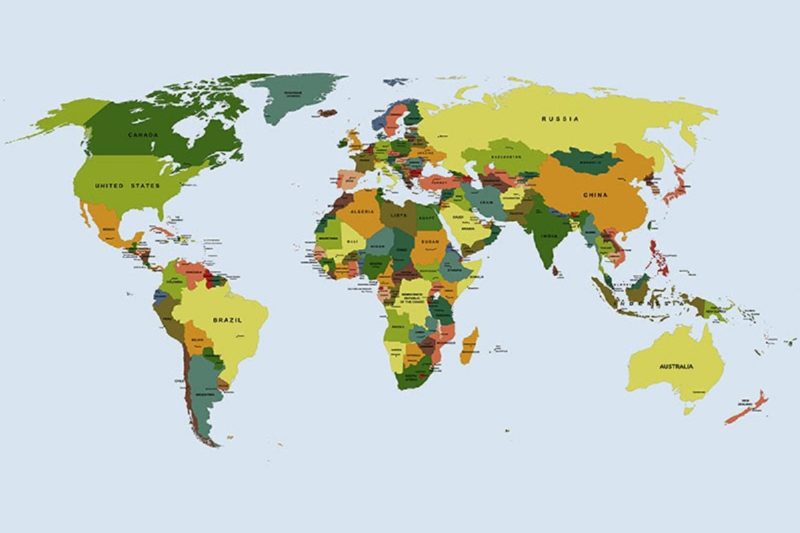Abortion in Developing Regions: What Progress Since 1990?
Wednesday serves as an important reminder that it is the basic right of every woman to be able to decide on the number and spacing of her children without having to put her health or life at risk—no matter where she lives.

Wednesday marks International Safe Abortion Day. Every year on this day, September 28, women’s health advocates from around the world unite in support of ensuring universal access to safe abortion care and the repeal of laws that criminalize abortion. This global day of action began in Latin America over a quarter-century ago in response to the countless deaths and injuries resulting from clandestine abortion procedures in the region, a reality still faced by millions of women today throughout the world.
Abortion is common. Globally, an estimated 56 million abortions took place each year between 2010 and 2014, which translates to one in four pregnancies ending in abortion.
A recent study, Abortion Incidence Between 1990 and 2014: Global, Regional, and Subregional Levels and Trends, conducted jointly by the Guttmacher Institute and the World Health Organization, found that most developed regions have seen a marked decline in the rate of abortion, dropping over a 25-year period from 46 to 27 per every 1,000 women of childbearing age. This downward trend suggests that women and couples in developed countries have become more successful at avoiding unintended pregnancies, a welcome development.
But the study also reveals uncomfortable truths about the situation elsewhere.
In developing countries in Africa, Asia, and Latin America and the Caribbean, the overall rate of abortion has barely changed over the same time period, dropping only slightly from 39 to 37 per every 1,000 women.
What is behind these figures and what must we do about it?
Unintended pregnancies are the main reason women seek abortion. The majority of women who have an unintended pregnancy have an “unmet need” for modern contraception, which means that although they don’t want to get pregnant, they are not using a modern contraceptive method. Instead they are using traditional methods, which have high failure rates, or they are using no method at all.
In many developing countries, the number of women with unmet need is growing—the desire to have smaller families and to space births at least two years apart is outpacing women’s use of contraception. Preventing unwanted and mistimed pregnancies through investments in high-quality family planning services is essential to reducing the number of unintended pregnancies and abortions. Such services must offer people a range of effective contraceptive methods, along with comprehensive information and counseling.
However, not every abortion can be prevented just by improving family planning services. No contraceptive method is 100 percent effective, and methods are sometimes used imperfectly. Pregnancy can be a result of rape. Circumstances change, even in wanted pregnancies: The loss of a job, death of a spouse, fetal abnormalities, or pregnancy-related health threats are among innumerable reasons pregnant women may seek abortion. Access to safe abortion care is essential so that women don’t have to resort to clandestine and unsafe procedures, which can put them at risk of physical harm.
The negative health consequences of unsafe abortion are alarming. An estimated 6.9 million women in developing regions were treated for complications from unsafe abortion in 2012, and as many as 40 percent of women who needed care never received it. In 2014, at least 22,000 women, mostly in Africa, died as a result of complications from unsafe abortion.
Laws that prohibit abortion altogether, or allow the procedure only under very limited circumstances, don’t stop women from having abortions. Dividing countries according to the legal status of abortion, the rate of abortion in those where abortion is prohibited altogether or permitted only to save a woman’s life is around 37 for every 1,000 women, as compared with 34 in countries where abortion is available on request.
At a minimum, countries should take appropriate steps to ensure universal access to safe abortion care to the extent allowed by the law. Unfortunately, despite what the data tell us on the positive relationship between access to safe abortion and public health, some countries are backsliding. In the United States, for example, there have been ongoing efforts to restrict access to abortion both at the federal and—in particular—at the state level. Between 2010 and July 2016 alone, state lawmakers across the country adopted 334 restrictions intended to make abortion care less available to women who need it. These restrictions often fall hardest on women who are poor, young, or otherwise vulnerable.
Where abortion access is constrained, post-abortion care needs to be readily available and accessible to ensure that women who experience a complication receive the care they need. That means health facilities must have the trained personnel, equipment, and medication needed to manage complications. As a first step, countries can expand access to post-abortion care by issuing official guidelines and setting national standards for provision of these services. For example, in 2012, the Rwandan government began a program that successfully increased the availability of post-abortion care in the context of a restrictive abortion law.
Wednesday serves as an important reminder that it is the basic right of every woman to be able to decide on the number and spacing of her children without having to put her health or life at risk—no matter where she lives.
Join the conversation online Wednesday—by following hashtags like #Sept28 and #SafeAbortion—to find out what advocates around the world are doing to expand access to safe abortion care for all.

